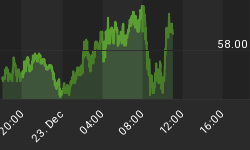With the demise of 2007, investors are looking to a new year and new opportunities. Some investors continue to hope collapse of housing and financial sectors will suddenly be reversed. Market strategists have called how many bottoms in housing sector? Which U.S. financial giant will be next to sell out to a foreign investor? Bubbles, or market sectors, do not reinflate, or reemerge. As shrewd investors move on to next stock market leadership, Agri-Food sector will be an obvious play. Growth fundamentals for Agri-Foods are apparent from investment returns being generated. Just plain U.S. dirt, like that which grows soybeans, has produced a ten year return of almost 9% versus a paltry 5% for U.S. equities. In Argentina, farmland values have risen by 50%. So, how is your C, FNM, and CFC doing?

This week's chart portrays the price performance of Agri-Food base commodities versus U.S. equities. Fundamental strength of the Agri-Food industry is demonstrated by these results. Participants and companies involved in Agri-Foods, around the globe, are benefiting from new reality of growing demand and inelastic supply. While grain prices may be less robust in 2008, new paradigm in Agri-Foods can not be ignored. It is a structural investment opportunity. So, turn the sound off when the cable media starts talking about the drivel known as today's economic data release or whether some withering financial stock will recover. Spend your time researching the bull cycle in Agri-Foods, the investment theme for the next decade.
AGRI-FOOD THOUGHTS are from Ned W. Schmidt,CFA,CEBS, publisher of Agri-Food Value View, a monthly exploration of the Agri-Food grand cycle being created by China, India, and Eco-energy. To review a recent issue write to agrifoodvalueview@earthlink.net.
We have also released U.S. Agricultural Land As A Portfolio Consideration - 2007. This report is a critical analysis of the returns on U.S. agricultural land versus U.S. equities. It concludes that the investors would be wise to replace equities with an investment in U.S. agricultural land. This analysis is largely statistical in nature, and designed for the sophisticated investor. Order it at http://home.att.net/~nwschmidt/Order-AgLand2007.
















